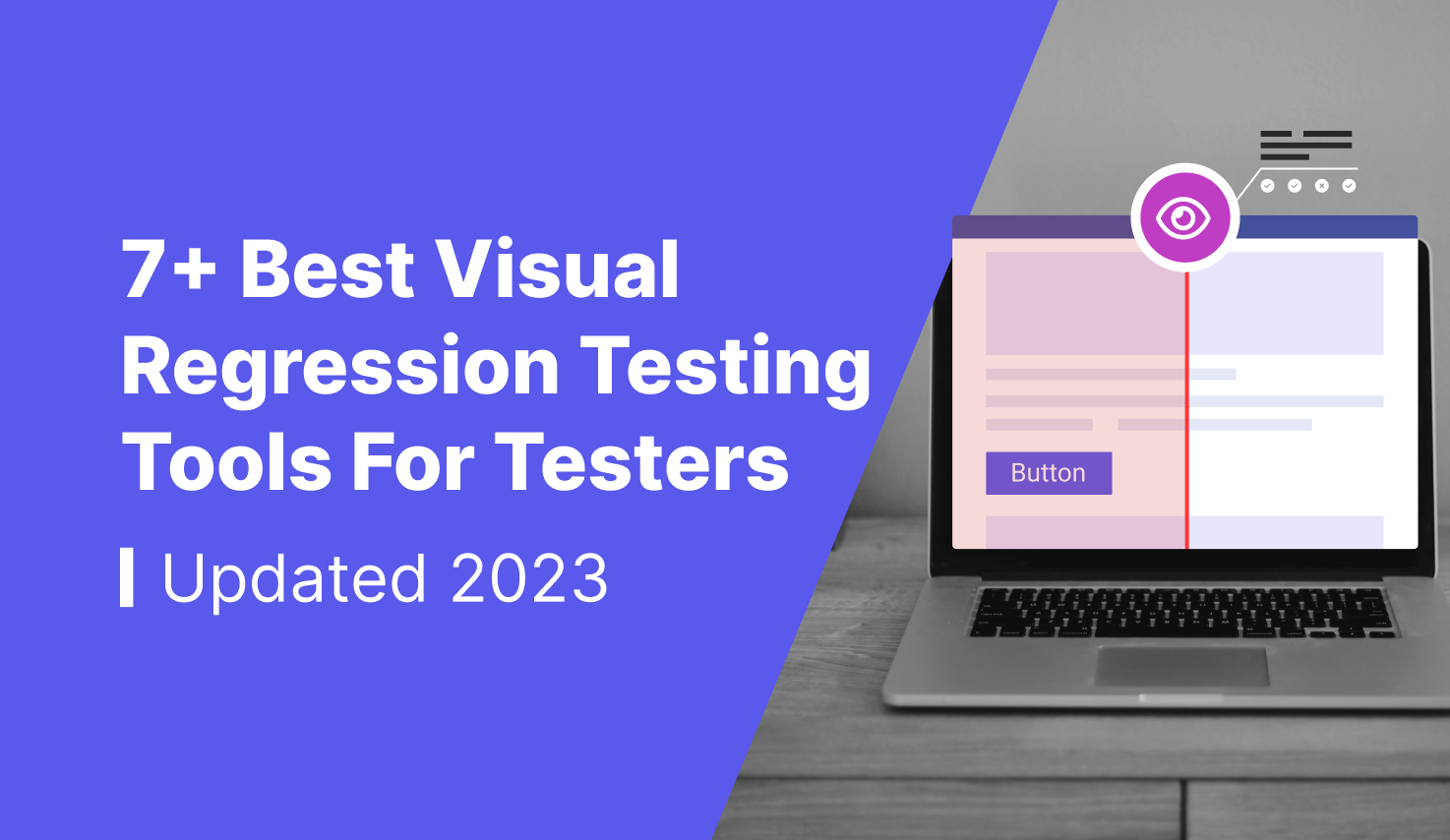Top 7 Visual Regression Testing Tools | Updated 2025
Learn with AI
First impression matters. Visual regression testing ensures that no visual bugs happen when new code is merged. It helps you create the flawless UI, which translates into perfect first impression when users land on the page.
Manual, fully human-driven visual regression testing can sometimes be tedious. The human eye is not infallible. Instead, have a good visual testing tool by your side. It equips you with powerful features designed to catch visual bugs faster and better.
We listed top 7 visual testing tools in this article, with detailed review for you to make informed decision.
What is visual regression testing?
Visual regression testing is a type of regression testing to ensure that no changes to the app adversely affect the GUI. It checks the aesthetic aspect of the app instead of the functionality aspect, which is the job of functional testing.
Visual regression testing is also referred to as visual validation testing, or simply, visual testing.
Scope of visual regression testing
Visual testing ensures that the following aspects of web/application elements align with expectations:
- Size
- Width
- Length
- Position
- Visibility (whether the user can see the element)
- Readability (whether the user can easily read the text and information on the element)
- Alignment (whether the UI element is well-placed in relation to other elements)
- Consistency across all screen resolutions (whether the layout remains the same on different screens)
Here are what happens when you don't do visual testing (or do it but miss the bug).
- During a version update, the Windows screen goes chaotic. Fortunately, this visual bug did not affect the end result of the Windows update.
- This is a visual bug from an electric bike/e-scooter sharing app, which probably affected the UX. Users sure had a difficult time navigating around and performing the task they wanted.
Why automate your visual regression testing?
Manual visual regression testing is the traditional approach to visual testing. With this approach, testers don’t employ any visual testing tools. They use their own visual acuity to spot the bug.
However, testers are humans, and humans make errors. Considering the number of screen sizes, browsers, and devices to be tested on, manual testing might not the best approach.
Can you spot 11 different spots in these 2 images? Try it, record your time, and imagine doing that repeatedly for hundreds of browsers and devices.
Automation testing comes into play and solves this issue. Instead of executing the same tests over and over using human power, you can tell a machine to do it for you.
Top 8 visual regression testing tools
1. Katalon

Katalon brings you both functional testing and visual testing in one single AI-powered software. Built on both Appium and Selenium, it gives you the automation capabilities of these two frameworks without the complexity of setting up, coding, and maintaining test cases.
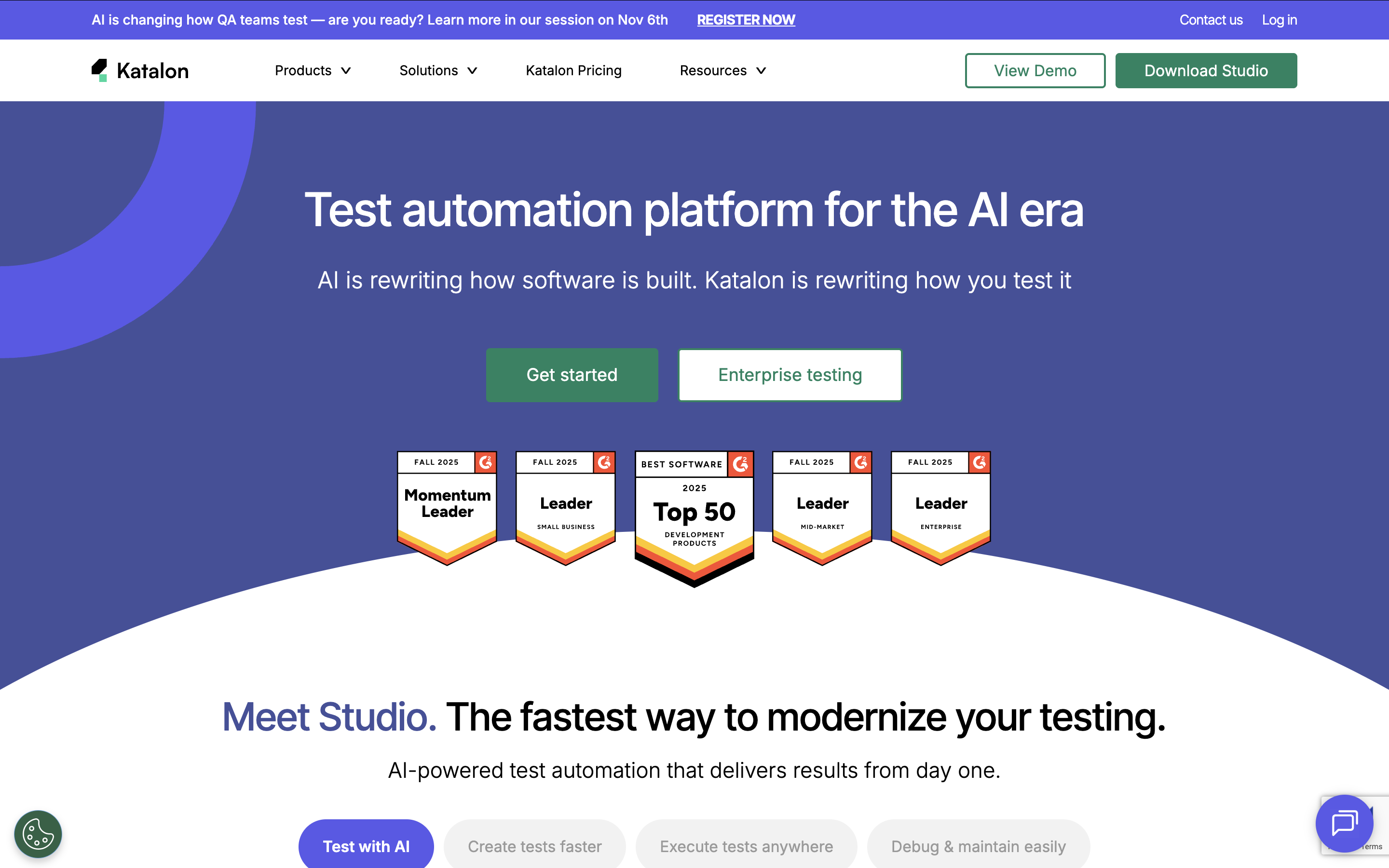
Key features:
- Create baseline images for comparison with actual UI
- Identify dynamic regions (e.g., banners, pop-ups) that won't be flagged as bugs if they change
- Layout comparison mode and content comparison mode
- Functional testing supported for a comprehensive testing experience
- Test management, reporting, Smart Analytics for informed decision-making
- Cross-browser and cross-device testing
Visit Katalon Website | Pricing | G2 Reviews
Start Your Free Trial With Katalon
2. Kobiton
Kobiton offers an all-in-one visual testing solution with no setup required. Simply run a baseline manual session on a real device, and Kobiton's AI engine will handle the rest—capturing, analyzing, and comparing UI across devices to detect visual discrepancies.
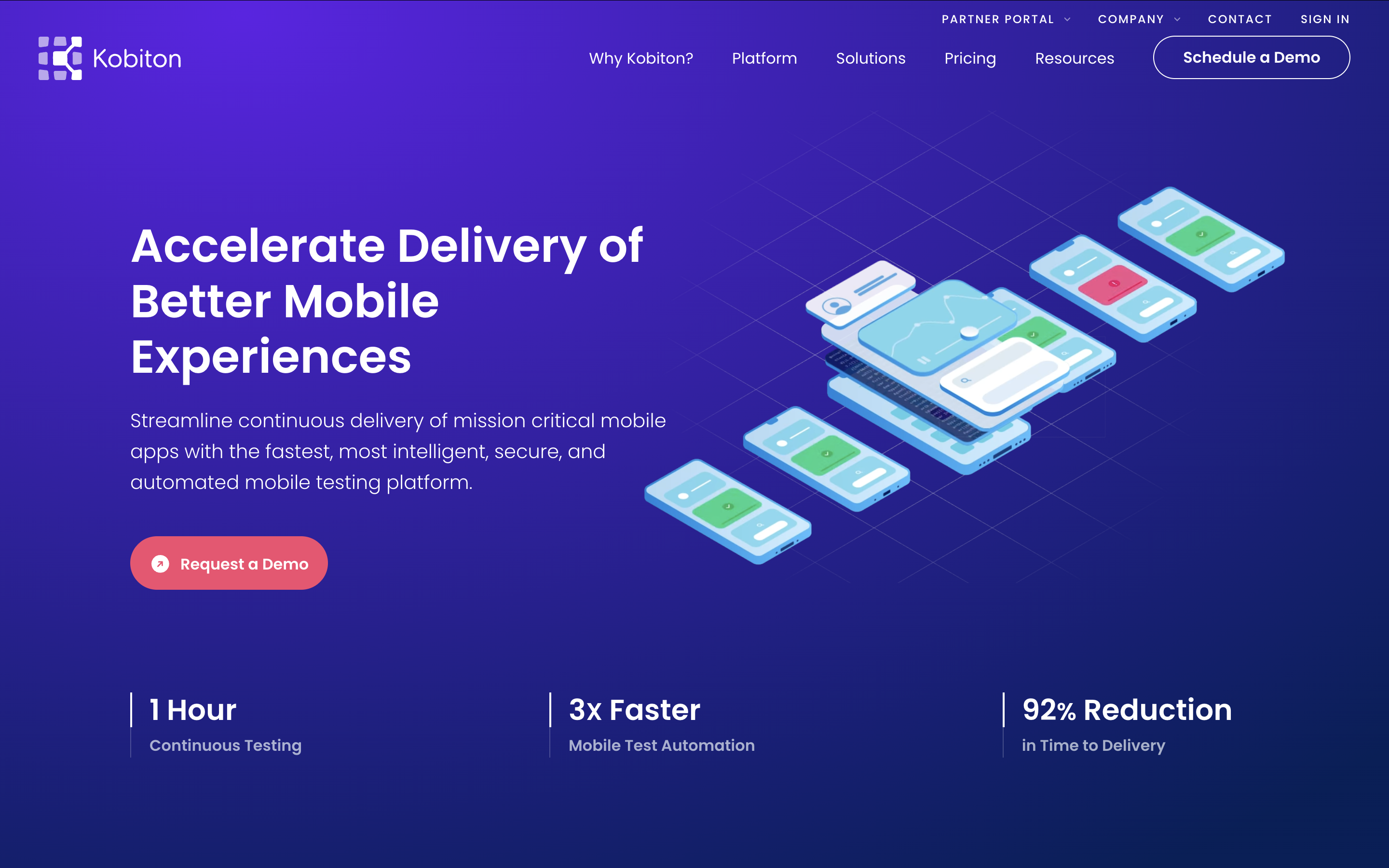
Key features:
- Capture screenshots during functional tests to use as baseline images for comparison
- Pinpoint layout, structure, and color issues across different devices
- AI-driven remediation and recommendations to enhance UX
- Scriptless test automation with customizable parameters and datasets
- Compare your app’s design to top market competitors
- No extra cost for visual comparisons
3. Applitools

Applitools is a leader in Visual Testing, revolutionizing the field with AI-driven scanning technology. By emulating the human eye, Applitools helps teams detect visual and functional regressions, reduce false positives, and speed up the release cycle.
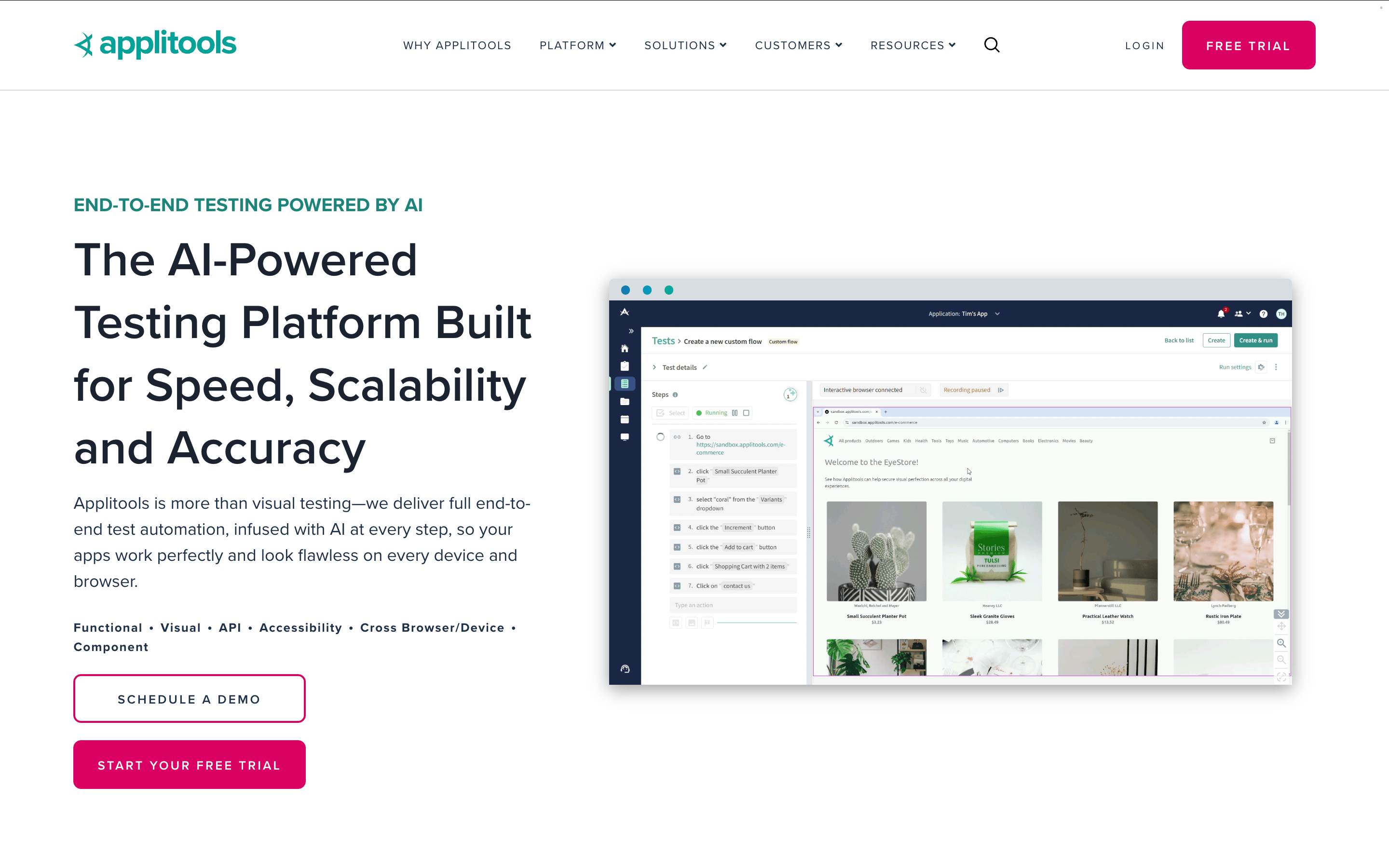
Key features:
- Applitools Eyes: Uses AI-based computer vision to identify both visual and functional issues
- Recognizes dynamic content (e.g., ads, personalized dashboards) and ignores them to avoid false positives
- Seamlessly integrates with test frameworks like Cypress, Selenium, and more
- Compatible with CI/CD tools such as Jenkins, GitLab, GitHub, and CircleCI
- Bug tracking integration with tools like Jira for detailed reporting
Visit Applitools Website | G2 Reviews
Pricing: Applitools offers three tiers to choose from: Starter, Eye, and Ultrafast Test Cloud.
4. Percy (from BrowserStack)

Percy is a visual regression testing tool that helps teams detect and review visual changes across browsers and devices. With smart comparison features, Percy highlights only the most noticeable changes and keeps your team updated with comments and notifications.

Key features:
- Automatic status updates in pull requests when visual changes are detected
- Snapshot stabilization to freeze animations and reduce false positives
- Ability to ignore specific areas of a page during visual comparisons
- Seamless integration with existing CI/CD workflows
- Supports popular test automation frameworks and languages
Visit Browserstack Website | G2 Reviews
5. AyeSpy
AyeSpy is an open-source project on GitHub for automating visual testing. Inspired by popular tools like Wraith and Backstop, AyeSpy stands out for its speed and ease of use, making it a great free option for visual regression testing.
Key features:
- Runs on Selenium Grid for scalable testing
- Inspired by Wraith and Backstop, with significant performance improvements
- Can perform 40 screenshot comparisons per minute
- Simple setup with straightforward documentation for quick onboarding
- Supports taking screenshots for multiple branches, reducing testing time
6. LambdaTest

LambdaTest offers a Smart Visual Testing feature to help teams easily compare image layouts and detect visual discrepancies. By uploading baseline and comparison screenshots, testers can quickly spot even the smallest visual bugs with the help of LambdaTest’s AI-powered image comparison engine.

Key features:
- On-cloud visual testing that detects issues with icon size, padding, color, layout, text, and element positions
- Access to 3000+ real browsers and operating systems, including Chrome, Firefox, Safari, Edge, and more
- Parallel testing support to reduce test execution time by up to 10x
- Extensive integration ecosystem with 120+ supported tools
Price: From $99/month
7. SikuliX

SikuliX is a top open-source visual testing tool that leverages image recognition to automate GUI interactions. It allows testers to identify and interact with on-screen elements like buttons, making it ideal for cases where access to the source code is limited.
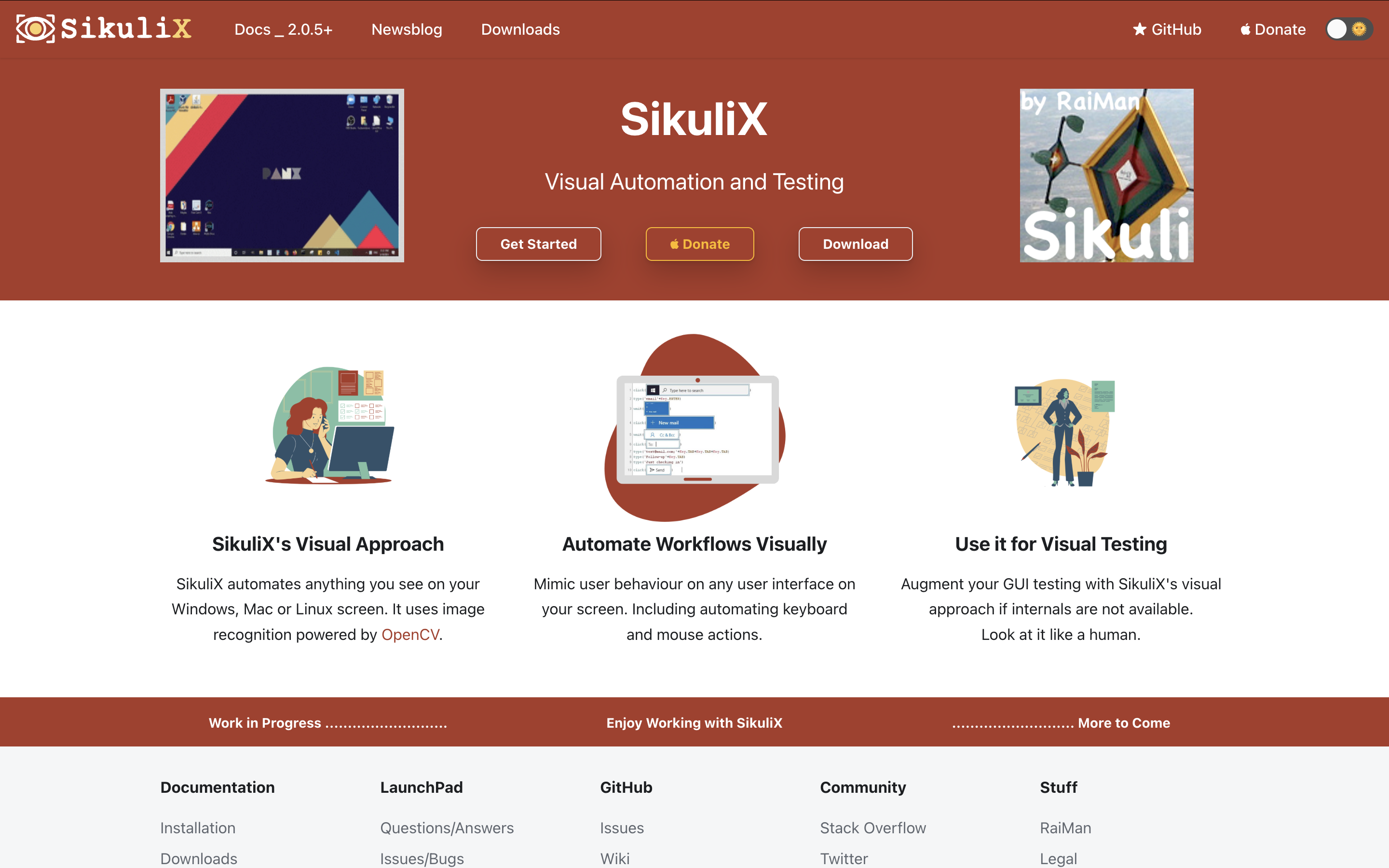
Key features:
- Automates visual testing for web pages, desktop apps, and mobile apps on Windows, Linux, Mac, iPhone, and Android
- Supports automation of Flash objects/Flash websites
- Allows GUI automation even without knowing the element ID
- Can be easily integrated with third-party applications
Conclusion
Visual regression testing ensures a high-quality user interface by quickly spotting visual errors. Manual and automated UI testing with open-source tools can be time-consuming, so investing in a low-code solution is a smarter long-term choice.
Many top tools now use AI/ML to detect UI changes and errors more accurately. These tools help organizations catch issues faster, ensuring a smoother and more efficient product deployment.
|
FAQs on Visual Regression Testing Tools
How does Katalon use AI to reduce false positives in visual regression testing?
Katalon uses AI to detect pixel-level changes and match zones between baseline and checkpoint images. It highlights layout changes and compares text across images, regardless of font or color, reducing false positives.
What is the difference between UI and GUI testing?
UI testing checks both functionality and visuals, while GUI testing focuses only on visual elements like buttons and text boxes.
Why is UI testing important?
UI testing ensures a consistent, reliable user experience by identifying usability issues and verifying that the app meets user expectations.
Is UI testing functional or non-functional testing?
UI testing is functional testing. It checks if the user interface works as expected.
Are there any free open-source visual validation tools?
Yes, tools like Selenium, Appium, and WebDriverIO offer free, open-source visual validation. However, they require advanced coding skills for setup and customization.

